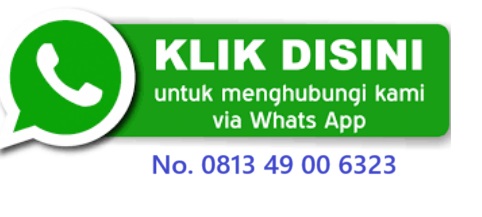Implementasi Metode Tartil dalam Pembelajaran Al-Qur’an Hadis di SMP Islam Walisongo Kembaran Kabupaten Banyumas
Keywords:
Implementation, Tartil Method, Learning Al-Qur'an HadithAbstract
The Qur'an and Hadith are two sources that serve as the foundation in Islamic education. Thus, by learning the Qur'an and Hadith, students can understand the contents of the Qur'an. To be able to understand the contents of the Qur'an, the ability to read the Qur'an is needed in accordance with the rules of tajwid science. Therefore, a learning method is needed that is appropriate to the conditions of students and the material to be delivered. This study aims to determine and describe the implementation of the tartil method in learning the Qur'an and Hadith at Walisongo Kembaran Islamic Middle School, Banyumas. The application of this tartil method aims to improve students' reading of the Qur'an in accordance with the rules of tajwid science. This study uses a qualitative approach with a type of field research conducted at Walisongo Kembaran Islamic Middle School, Banyumas Regency. Data were collected through observation, interviews, and documentation. The results of the study indicate that the implementation of the tartil method in learning the Qur'an and Hadith is carried out through three stages, namely the planning stage, the implementation stage, and the evaluation stage. In the planning stage, teachers design lesson plans, determine learning strategies, and select Quranic readings. The implementation stage involves habituation activities to create a conducive atmosphere, and students read the Quran under teacher guidance and direct correction. The evaluation stage is carried out to assess students' Quranic reading abilities.
Downloads
References
Amin, S. (2011). Penggunaan Metode Tartil dalam meningkatkan kemampuan membaca al-Qur‟an Mahasiswa Institut Agama Islam (IAIN) Raden Intan Lampung. Laporan Penelitian Kompetitif.
Fakhrezi, M. F., Bijaksana, M. A., & Huda, A. F. (2021). Implementation of Automatic Text Summarization with TextRank Method in the Development of Al-Qur’an Vocabulary Encyclopedia. Procedia Computer Science, 179(2020), 391–398. https://doi.org/10.1016/j.procs.2021.01.021
Farikhin, F. (2022). Penerapan Metode Tartili Daiam Pembelajaran Membaca Al-Qur’an Di TPQ Nurul Hikmah Kertonagoro Jenggawah Jember. Ta’limDiniyah: Jurnal Pendidikan Agama Islam (Journal of Islamic Education Studies), 3(1), 15–45. https://doi.org/10.53515/tdjpai.v3i1.24
Haryono, E. (2022). Metodologi Penelitian Kualitatif Di Perguruan Tinggi Keagamaaan Islam. The Journal of Islamic Studies.
Komariah, N., & Nihayah, I. (2023). Improving The Personality Character of Students Through Learning Islamic Religious Education. At-Tadzkir: Islamic Education Journal, 2(1), 65–77. https://doi.org/10.59373/attadzkir.v2i1.15
Rahim, A., Muktadir, A., Jabar, F., Waluyan, P. D., & Alwan, M. M. (2023). Implementasi Kemampuan Membaca Al-Qur’an Dengan Penerapan Metode Tartil Pada Siswa Kelas V Di Min 1 Baubau. Jurnal Wawasan Sarjana, 2(1), 21–29. https://doi.org/10.35326/juwara.v2i1.3312
Susanti, R. (2024). Al-Ijtima’ I: Jurnal pengabdian masyarakat volume 1 nomor 1 Juni ( 2024 ) E-ISSN XXXX-XXXX Optimalisasi Kemampuan Membaca Al- Qur ’ an Melalui Pembelajaran Al- Qur ’ an Hadits Sebagai Peningkatan Pemahaman Keagamaan. 1, 1–10.
Syafril, S., Yaumas, N. E., Engkizar, E., Jaafar, A., & Arifin, Z. (2021). Sustainable Development: Learning the Quran Using the Tartil Method. Al-Ta Lim Journal, 28(1), 1–8. https://doi.org/10.15548/jt.v1i1.673
Wenni, O., Husni, A., Wati, S., & Junaidi, J. (2023). Pengaruh Penggunaan Metode Tartil Untuk Meningkatkan Kemampuan Membaca Al- Qur’an Di Mtsn 04 Lima Puluh Kota. Jurnal Pendidikan Dan Konseling (JPDK), 5(4), 532–538. https://doi.org/10.31004/jpdk.v5i4.18057
Downloads
Published
How to Cite
Issue
Section
License
Copyright (c) 2025 Widi Wahyu Lestari

This work is licensed under a Creative Commons Attribution-NonCommercial-ShareAlike 4.0 International License.






